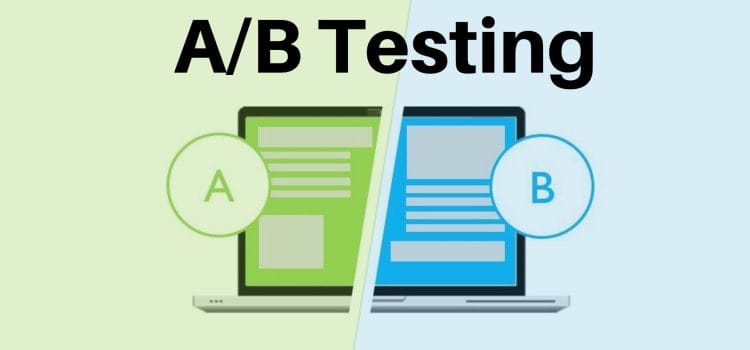Every successful digital product, from the most addictive social media app to the most profitable e-commerce store, has at some point relied on an invisible weapon: the controlled experiment. You’ve probably experienced it without realizing. One day, the button on a website is blue. The next day, it’s green. You click without thinking, unaware that you are part of a silent, meticulous experiment designed to answer a deceptively simple question: Which version works better?
That is the essence of A/B testing — a tool that blends the precision of science with the unpredictability of human behavior. It’s not just a technical process. Done right, it’s a disciplined form of curiosity, a structured way of asking “what if?” and then letting reality, rather than assumptions, answer.
The best A/B testers are not merely analysts running numbers. They are part scientist, part storyteller, part detective. They know that behind every metric is a person with emotions, habits, and needs — and the job of the test is to reveal a truth about how that person reacts to change.
But to reach that truth, you must design with care, execute with precision, and interpret with humility. A/B testing can unlock breakthroughs… or lead you straight into false confidence if done poorly.
Designing an Experiment That Matters
The most common mistake in A/B testing doesn’t happen during analysis. It happens before the first line of code is written: designing a test that can’t possibly answer the right question.
The starting point is clarity. Every experiment should have a single, sharply defined objective. Instead of vaguely wanting to “improve engagement,” ask something concrete: “Does changing the signup button text from ‘Join Now’ to ‘Get Started Free’ increase the signup completion rate by at least 5%?”
That level of precision is not bureaucratic overkill. It’s the compass that keeps your test from wandering. Without it, you risk chasing random fluctuations instead of real insights.
Equally important is identifying the primary metric — the one number that will define success or failure. In a world full of data dashboards, it’s tempting to track dozens of metrics, but if you don’t anchor the experiment to a single outcome, you invite confusion and cherry-picking. Supporting metrics are valuable for context, but the main metric is the judge and jury of your experiment.
A good design also considers the human side of the change. If you’re testing a new pricing layout, for example, your metric might be immediate conversion — but your change might also subtly affect long-term retention, customer trust, or referral behavior. The best experimenters anticipate these side effects and decide in advance whether to measure them now or in follow-up tests.
Choosing and Segmenting Your Audience
The audience for your experiment isn’t just “users” in the abstract. It’s a living, breathing cross-section of real people, each with unique contexts. When you run an A/B test, you are essentially splitting this population into two (or more) groups and hoping they are statistically equivalent except for the change you’re making.
Randomization is the shield that protects your results from hidden biases. Without it, differences between the groups might reflect pre-existing behaviors rather than the effect of your change. Yet randomization alone isn’t enough. You must also ensure that your sample size is large enough to detect meaningful differences. Too small, and you risk false positives or false negatives.
Segmenting your audience thoughtfully can reveal deeper truths. Perhaps a change works wonders for new users but alienates loyal customers. Or maybe mobile users respond differently than desktop users. The key is to decide before the experiment whether you will look at these segments — otherwise, you risk data dredging, where every subgroup seems to tell a different story purely by chance.
The Art of the Control and the Variation
In an A/B test, A is usually the control — the existing version of whatever you’re testing. B is the variation — the change you believe might perform better. The temptation is to make big, sweeping changes to maximize the effect. Sometimes that works, but large changes can make it harder to pinpoint what caused the difference.
Subtle, focused changes are often more scientifically sound because they isolate variables. If you change the color, shape, and text of a button all at once, you’ll never know which element actually mattered. On the other hand, if you’re looking for transformational improvements, incremental tweaks may be too timid. The art lies in matching the scale of your change to the strategic goal of your experiment.
And never forget: the control is sacred. If your control isn’t stable, if it changes mid-experiment due to other product updates, your test is compromised. Protect it like a scientist protects their baseline conditions.
Running the Test Without Contamination
Once your experiment goes live, the work shifts from design to discipline. The hardest part for many teams is leaving the test alone. There’s a powerful urge to peek at the results early and make quick calls. But early data is noisy. A test that looks like a clear win after two days can reverse completely after two weeks.
Running the test for the full planned duration is essential to avoid peeking bias. This bias occurs because random fluctuations in small samples can produce misleading signals. Ending a test early because it “looks done” often locks in a false conclusion.
Equally dangerous is contamination — when users are accidentally exposed to both the control and the variation, or when changes outside your experiment affect the outcome. In complex systems, these leaks are hard to avoid entirely, but meticulous tracking, clean data pipelines, and coordination with other teams can minimize the risk.
Analyzing With Precision and Skepticism
When the data is finally in, the most important trait you can bring to analysis is humility. Numbers can mislead, and statistical significance is not the same as practical importance.
Statistical significance tells you the likelihood that your observed difference is real rather than random chance. But a tiny improvement that is statistically significant might still be irrelevant if it doesn’t meaningfully move your business metric. Likewise, a big swing that fails to reach significance might simply be underpowered — meaning you didn’t have enough data to see the effect clearly.
Confidence intervals, effect sizes, and power calculations are not optional technicalities. They are the tools that allow you to distinguish between a fluke and a genuine pattern. The best experimenters resist the temptation to treat p-values as magic pass/fail labels. They interpret them in context, alongside other evidence.
It’s also crucial to look for hidden signals. Did certain segments behave differently? Did secondary metrics shift in ways that reveal unintended consequences? If your new design increased conversions but also increased refund requests, you have a story that needs deeper investigation.
The Psychological Pitfalls of Interpretation
Humans are natural pattern-seekers. Once we have a hypothesis, we tend to look for data that confirms it and downplay data that contradicts it. This confirmation bias is deadly in A/B testing. It can lead you to declare victory on shaky evidence or ignore a variation that could have been a long-term win.
The best antidote is pre-registration — writing down your hypothesis, metrics, and analysis plan before you run the test. This discipline forces you to confront your biases upfront and makes your interpretation more trustworthy.
Equally dangerous is the tendency to see every significant result as a permanent truth. In reality, user behavior evolves. A design that works brilliantly today may lose its edge as competitors adapt or as your audience changes. Continuous testing is not just a strategy; it’s a necessity.
From Results to Action
A/B testing is not an academic exercise. Its value comes from turning insights into action. That means you must decide, based on the evidence, whether to roll out the winning variation, run another test, or dig deeper into unexplained results.
When a variation wins decisively, implementation can be straightforward. But when results are mixed, the decision is harder. Do you chase a small improvement because it’s statistically real, or do you hold out for a bigger win? The answer depends on your product’s stage, your resources, and your tolerance for risk.
Sometimes the smartest move after a test is to go back to the drawing board with a better understanding of what your users value. A “failed” test isn’t wasted — it’s an investment in knowledge.
Building a Culture of Experimentation
A/B testing is most powerful when it’s not just a tool, but a mindset embedded in your organization. In such a culture, opinions — even from senior leaders — are hypotheses to be tested, not truths to be assumed. Decisions are guided by evidence, and failures are treated as data, not personal defeats.
Building this culture requires transparency. Share not only the wins but also the tests that failed or produced no difference. Over time, this openness builds trust in the process and helps teams understand that the goal is not to be right, but to be effective.
It also requires accessibility. The more people in your organization who can design, run, and interpret tests, the faster you can learn. This doesn’t mean abandoning statistical rigor — it means providing tools, training, and support so experimentation becomes a shared skill rather than a specialized silo.
The Limits of A/B Testing
For all its power, A/B testing is not a universal solution. Some changes are too large or too complex to isolate in a controlled test. Others involve ethical considerations — you can’t A/B test safety-critical features in ways that put users at risk.
There are also situations where the environment changes so rapidly that the results of a test are obsolete before they can be acted upon. In such cases, you may need to complement A/B testing with qualitative research, market analysis, or observational studies.
The key is knowing when A/B testing is the right tool and when another approach would yield more reliable insights. Over-reliance on any single method is a recipe for blind spots.
The Human Side of Data
At its core, A/B testing is about people. The clicks, conversions, and retention curves are proxies for human choices, desires, and frustrations. The best testers never lose sight of this. They use data not to manipulate, but to serve — to create experiences that meet real needs more effectively.
That mindset turns testing from a cold statistical exercise into a form of empathy. It’s not just about winning more signups; it’s about making those signups feel welcome. It’s not just about increasing time on site; it’s about making that time meaningful.
When you treat A/B testing as a way to listen to your users rather than just optimize them, the quality of your experiments — and your results — will transform.
The Endless Loop of Learning
The end of one A/B test is the beginning of the next. Each result, whether triumphant or disappointing, feeds into a continuous loop of questions, hypotheses, and experiments. Over time, this cycle becomes a kind of evolutionary engine, guiding your product toward better and better fits with your audience.
The journey never truly ends, because both your users and your context keep changing. Competitors emerge, technologies evolve, and cultural shifts alter expectations. The only way to keep pace is to keep learning — and A/B testing, when done with rigor and curiosity, is one of the most reliable ways to do that.
In the end, the best practice of all is not any single design trick, analytical technique, or statistical formula. It’s the discipline to keep asking questions, the courage to be wrong, and the humility to let the data — and your users — show you the way.






